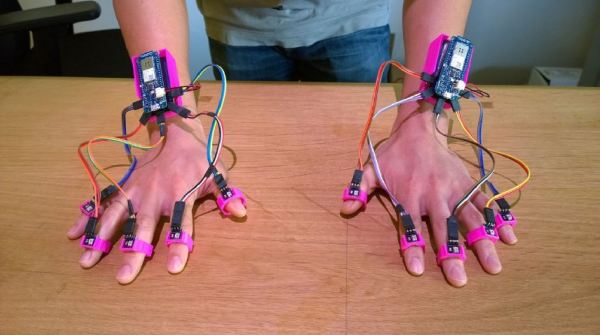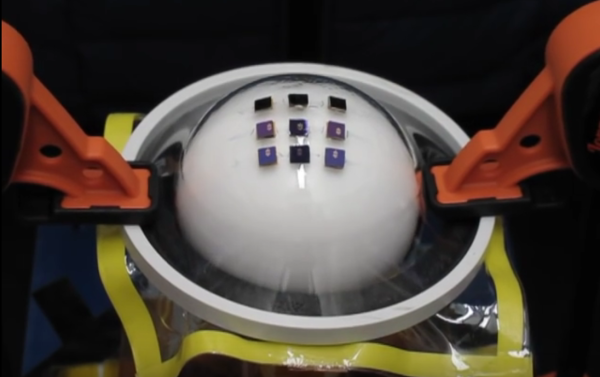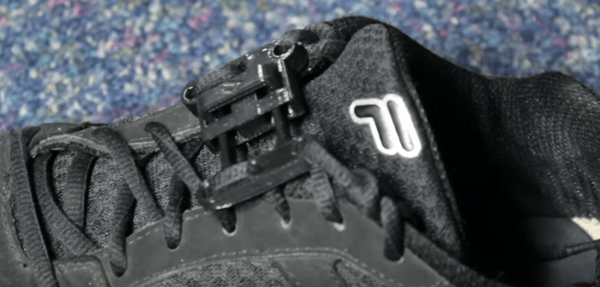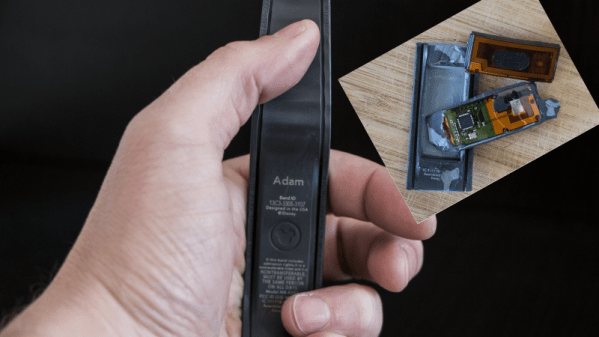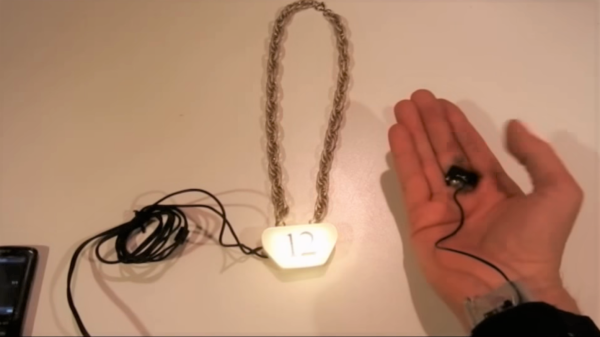If Star Trek taught us anything, it’s clearly that we’re not quite in the future yet. Case in point: androids are not supposed to be little flecks of printed circuits with wires and jacks sprouting off them. Androids are supposed to be gorgeous fembots in polyester kimonos with beehive hairdos, designed to do our bidding and controlled by flashing, beeping, serial number necklaces.
Not willing to wait till the 23rd century for this glorious day, [Peter Walsh] designed and built his own android amulet prop from the original series episode “I, Mudd.” There’s a clip below if you need a refresher on this particularly notable 1967 episode, but the gist is that the Enterprise crew is kidnapped by advanced yet simple-minded androids that can be defeated by liberal doses of illogic and overacting.
The androids’ amulets indicate when they BSOD by flashing and beeping. [Peter]’s amulet is a faithful reproduction done up in laser-cut acrylic with LEDs and a driver from a headphone. The leads for the amulet go to a small control box with a battery pack and the disappointing kind of Android, and a palmed microswitch allows you to indicate your current state of confusion.
You’ll be sure to be the hit of any con with this one, although how to make smoke come out of your head is left as an exercise for the reader. Or if you’d prefer a more sophisticated wearable from The Next Generation, check out this polished and professional communicator badge. Both the amulet and the communicator were entries in the Hackaday Sci-Fi contest.
Continue reading ““Norman, Coordinate!”” →




